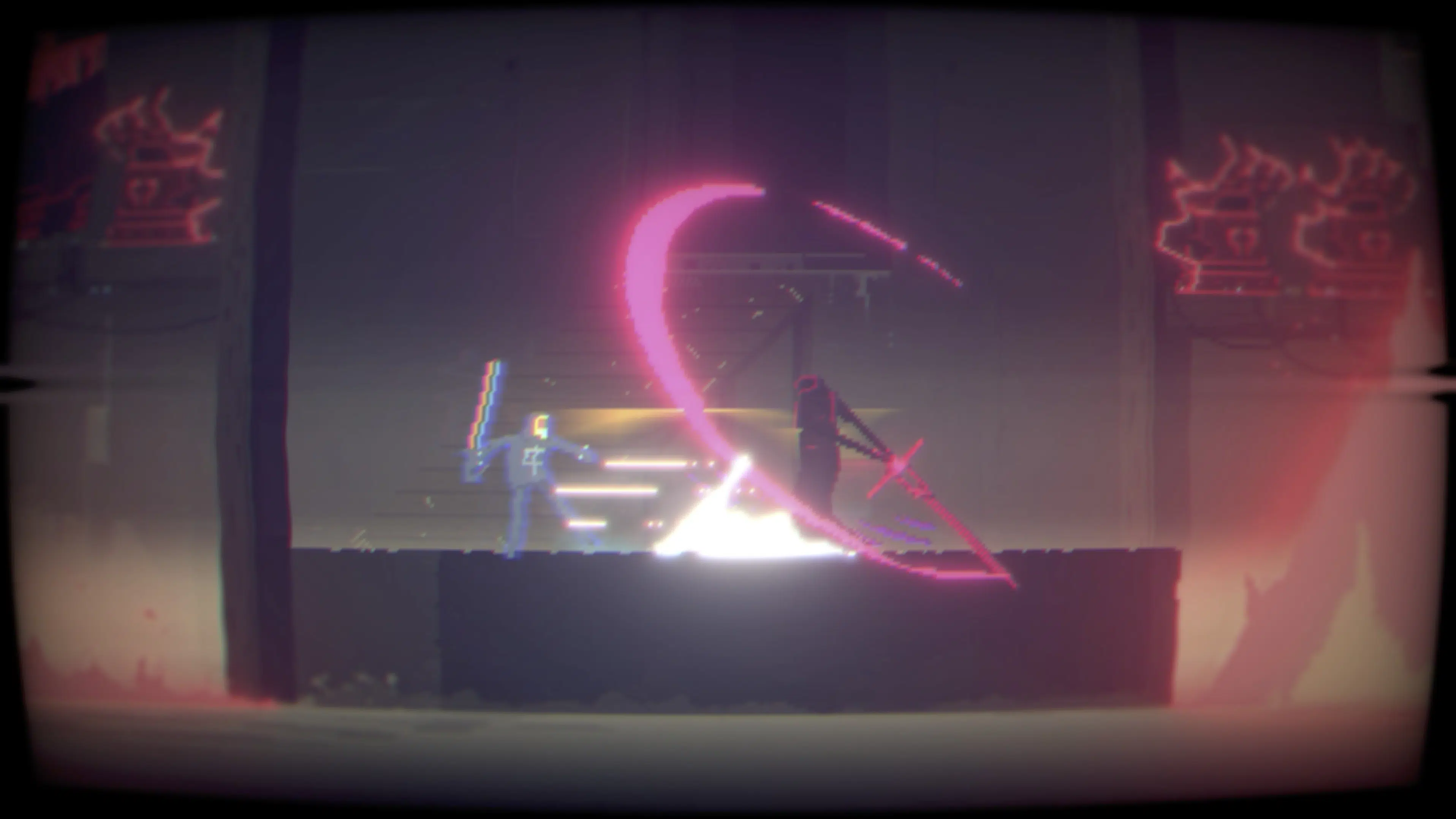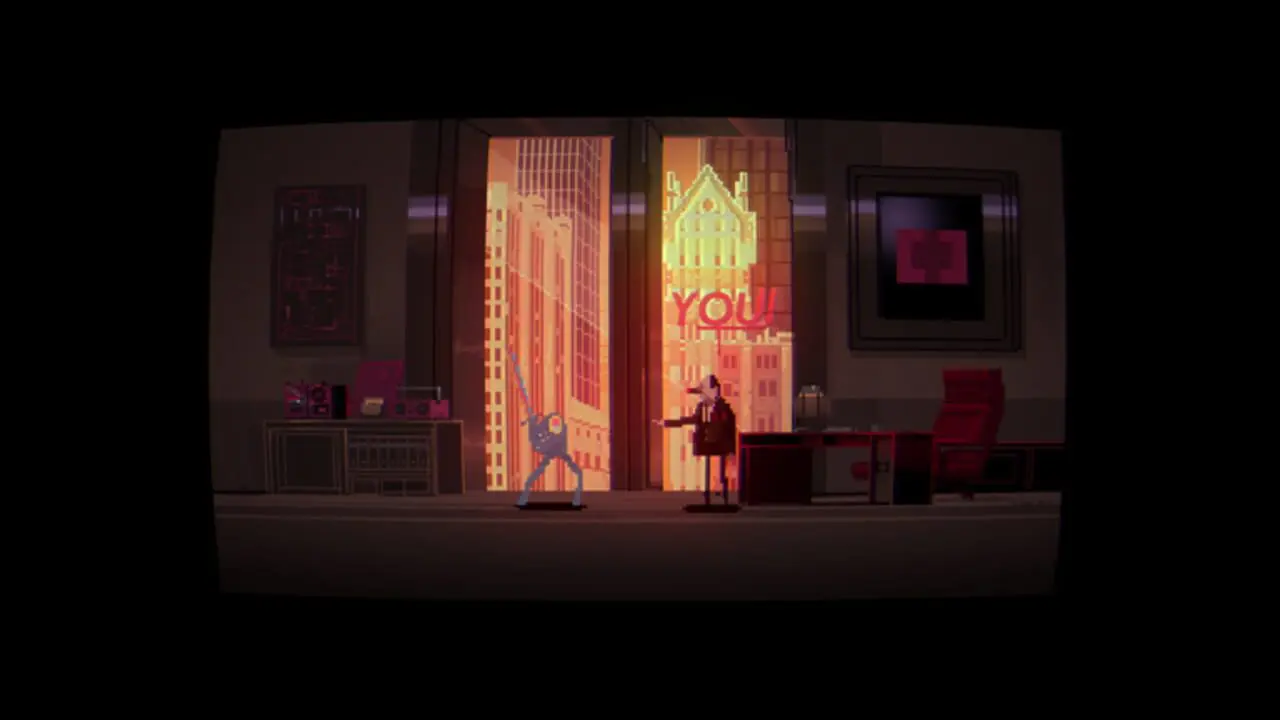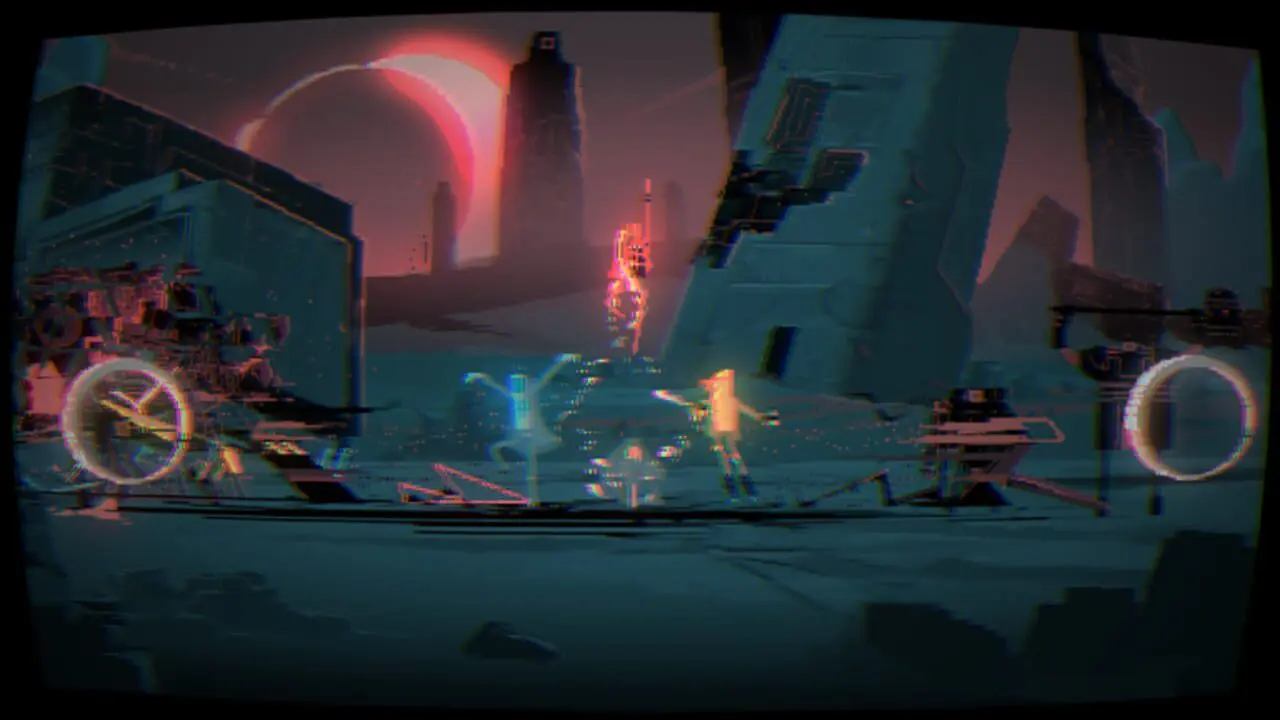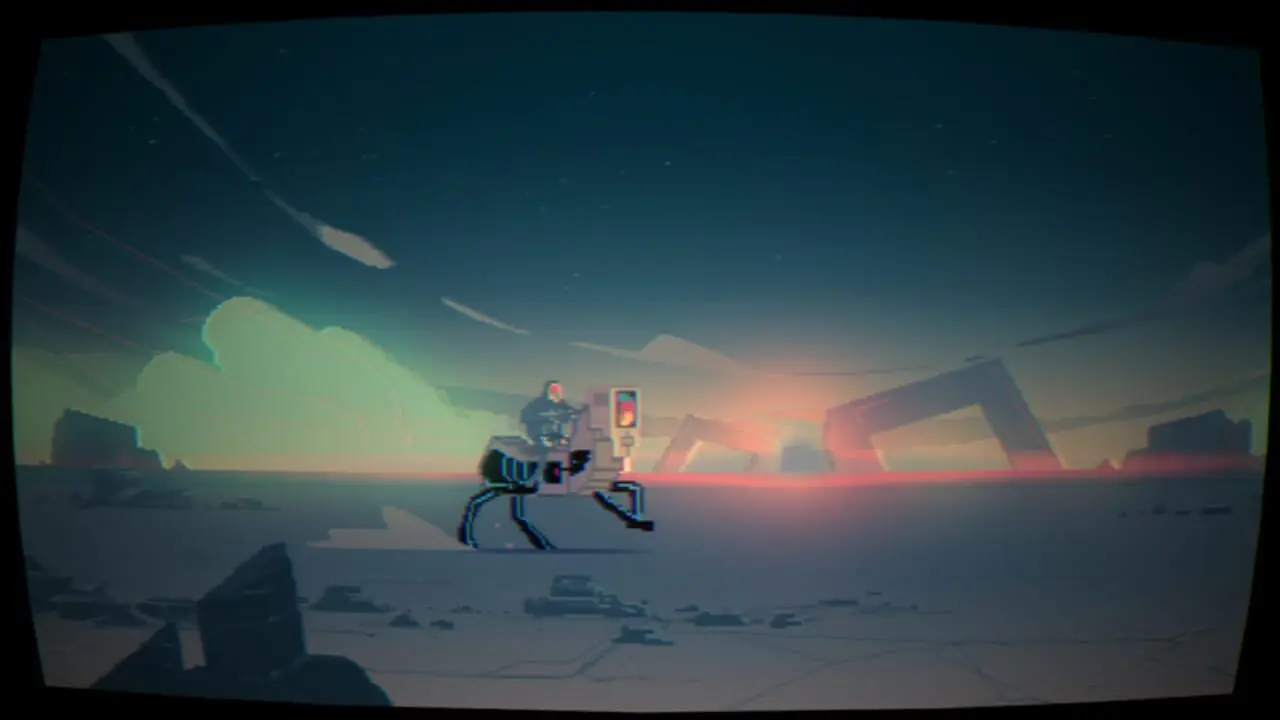It’s interesting to look back at the way computers have been described or depicted at various times in their history. In the ’80s and ’90s, when the technology was still rather new and was just being introduced to the general public in a serious way, there was a lot of interest in exploring and trying to understand exactly what we had created. The rather inaccurate and simple methods of things like The Computer Wore Tennis Shoes fell out of popularity and there was a shift towards the near mystical, and calling this sub-genre ‘Technological Fairy Tales’ wouldn’t be altogether inappropriate. Tron was the most successful of this type of story and it’s this legacy that Narita Boy is looking to pay its ritual tribute to. The questions, then, are how good does it do this? Is it a rip-off or a truly original product that just knows what it’s inspirations are? And, probably most importantly, is it any fun to play? Let’s talk about it.
Forever Young
I feel obligated to start my discussion by saying that I really don’t like when a modern game has pixel graphics. Old games are charming because of their pixels but they’re products of their time. As a rule, I prefer graphics that either use current tech, are distinctive, or have a strong art direction. Narita Boy is the exception that proves the rule. These are pixel graphics, but the art direction, lighting, and effects are absolutely top shelf. The themes and setting contribute heavily to why this works for me.
Every time I boot it up I’m more impressed with it, and I think largely with just how much I like it. There’s a real emotional weight to the visuals, as it feels like you’re inside a world encased in an old operating system. You can grasp the “Creator’s” own melancholic pained state of mind as you explore the ruins of the world he’s created only to accidentally allow it to be destroyed by pieces of itself. The way the sprites are animated is reminiscent of the detailed animation of the Metal Slug games but with far fewer pixels. The lighting effects, as well as the background vistas that are employed, go a shocking distance towards recreating a lot more of the dreary aesthetics of 80’s techno-fantasy. It’s a masterclass in using modern technology to imitate and greatly enhance the look and feel of a past era.
A word of critique that I ought to mention. The game defaults upon starting with an optional CRT filter to really complete the feel of playing a game set in the 80’s. While it’s better than some CRT filters I’ve seen, it still gave me a headache and was more distracting than anything so I turned it off in the options. Personally, I’m not sure why developers keep trying this as the look of a CRT was very much a mechanical thing and can’t truly be imitated without physically replicating the actual limitations of those old sets (look up vector graphics for an even more extreme version of this phenomenon).
Everybody Wants to Rule the Digital Kingdom
While it is a 2D genre mashup with elements of Metroidvanias, beat-em-ups, and traditional platformers, Narita Boy is very story-driven. You play as the titular Narita Boy, a user of a new and popular computer and operating system that gets sucked into the Digital Kingdom late one night in the mid 80’s. The Digital Kingdom, which is what the residents of the operating system call their home, is in desperate need of help. It seems that one of the leaders of the three houses of the Trichroma, who is named simply HIM, and his army of programs called “Stallions,” have risen up in an attempt to take over the other two tribes.
You are the prophesied hero that the Creator, a Japanese-American computer scientist that designed the system and sports a slick pair of sunglasses at all hours of the day, promised would come to save the Digital Kingdom. It’s all a little silly but it takes itself sincerely with a very subtle humorous hand that prevents it from being cheesy. It often genuinely feels like you’re exploring the devastated ruins of a great civilization. For comparison purposes, think of the obvious Tron influence combined with Blade Runner and the Arabian Knights fairy tales, all set almost exclusively at night or dusk.
Dancing In The Dark
As I’ve already mentioned, this is a mixed genre experience. The main structure is to enter a new area, speak with some NPC (the game’s dialogue is entirely text-based with no voice-over present) and then set about completing puzzles, memorizing patterns of three shapes in a row that are hidden in the game world in order to activate teleporters and gain access to new areas, finding keys, and fighting groups of enemies along the way. While all of this is fun, the standout is combat. It’s not a complex system like one might expect from something like last year’s Hades, but it has just enough moves and varied options that it is fun and makes you feel like the cool tech ninja you’re supposed to.
If I were to offer any critique to the gameplay, it’s the way it handles objective finding and tracking. All the directives in each area are given by talking to NPCs, so you really ought to stop and talk to every single one. Not much of an issue since the writing is enjoyable if often filled with the game’s own internal lingo (think a milder version of A Clockwork Orange in some respect).
However, once an objective is added to your list, there isn’t any indication of where the person or item you’re looking for is. This is fine if you’re able to play in relatively long stretches over a short period of time, since the areas do eventually bottleneck down to a single way forward. That said, if you are playing in spits and spurts when you can, you’ll often get lost upon loading a save and have to wander around for a while trying to remember where everything is. Considering the size of some of the areas that can take some real time. It’s not a game breaker, and I get that they’re going for a retro feel with it, but for adults with jobs and responsibilities, it’s a limitation more than an asset. The one consolation is that the checkpoint system is generous and saves often.
Pump Up The Jam
The music that Studio Koba put together is also exceptional. It fits the mood of the game perfectly and is good enough that I’d listen to it on its own. The sound effects and ambient sounds otherwise aren’t as memorable or stand-out unique, but that’s no knock against it as it does its job and wasn’t ever a distraction.
The music is what one might expect given the setting: a vibing synth score with a moody contemplative feel, at least until the battle music kicks in, at which point it becomes much more urgent and kinetic. Out of the different areas my favorite score is the one for the Yellow Chroma; I really dig the desert ruins motif and the music fits perfectly.
The Final Countdown
Narita Boy didn’t have to be very good. It was largely crowdfunded on Kickstarter, and once it was out it could have been like a lot of Kickstarter games, or it could have been a non-starter that got launched and fell flat, but the team at Studio Koba really pulled this one out. It’s not a life-changing experience nor is it some deeply spiritual journey, but I think it’a a fun retro game that understands that it’s still a modern release. This is the sort of project that makes big publishers take a team seriously, and whether they decide to partner with a publisher or stay indie, I suspect we’ll see more from Studio Koba coming down the pipeline…er, datastream.
Score: 8.5/10
Pros:
- Gorgeous graphics.
- Interesting and well done story and atmosphere.
- Solid soundtrack.
Cons:
- Opaque player directives and no way to jog your memory after an absence.
- Combat, while not bad, could have been more engaging.
Review code provided by the publisher. Played on Xbox. You can read SP1st and MP1st’s review and scoring policy right here.



